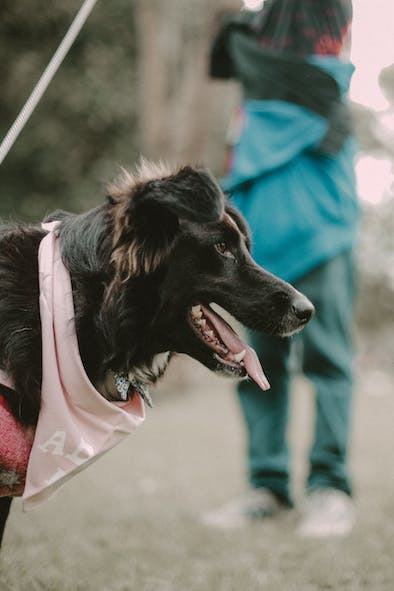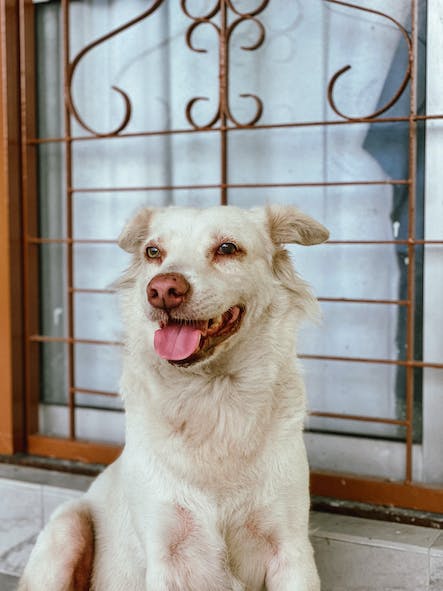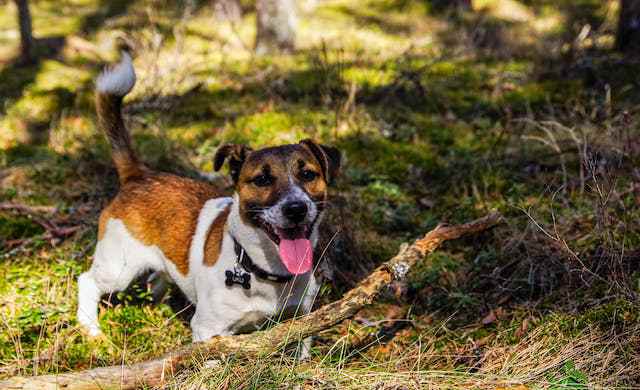If you’ve ever wondered why your furry friend gets a little possessive over their turf, you’re in the right place.
In this blog post, we’ll be diving into the fascinating world of territorial aggression in dogs, exploring the reasons behind this behavior, and giving you some practical tips to help manage it.
So, grab a seat, and let’s get started on unraveling the mysteries of our four-legged friends!
What is Territorial Aggression in Dogs
Territorial aggression in dogs refers to aggressive behavior displayed by dogs towards other animals or humans in defense of their territory.
It is a natural instinct for dogs to protect their territory and can manifest through barking, growling, lunging, or even biting.
Territorial aggression can be triggered by perceived threats or intrusions into the dog’s territory.
Dog owners need to understand and manage territorial aggression through proper training, socialization, and behavior modification techniques.
Signs of Territorial Aggression in Dogs

The following are some of the most common signs of territorial aggression in dogs:
1. Barking and Growling: When a dog feels threatened by a perceived intruder in its territory, it often responds by barking and growling. This vocalization serves as a warning, alerting the intruder to the dog’s presence and intent to protect its territory. The barking and growling can be intense and persistent, escalating if the intruder does not back off.
2. Lunging and Snapping: As a more aggressive response, a dog displaying territorial aggression may lunge toward the intruder, attempting to physically intimidate or attack. This behavior is often accompanied by snapping or biting motions, aiming to establish dominance and defend the territory. It is important to note that the dog may not necessarily make contact with the intruder, but the intent is clear.
3. Raised Hackles: The hackles, which are the hairs along the back of a dog, can become raised when the dog is exhibiting territorial aggression. This response, known as piloerection, is an involuntary reaction caused by heightened arousal and an attempt to make the dog appear larger and more intimidating. Raised hackles, along with other aggressive body language, serve as a visual warning to the intruder.
4. Intense Staring: Dogs with territorial aggression often engage in intense staring at the intruder. This prolonged eye contact is an assertive behavior aimed at asserting dominance and communicating a clear message of threat. The dog may maintain direct eye contact, making the intruder uncomfortable or feel challenged.
5. Defensive Body Posture: Dogs displaying territorial aggression adopt a defensive body posture to appear more imposing. They may stand tall, raise their head, stiffen their body, and hold their tail high and rigid. This posture is an attempt to communicate strength and assert their dominance over the intruder. The dog may also lean forward, ready to react aggressively if necessary.
6. Marking Territory: Dogs have a strong instinct to mark their territory by urinating or defecating in specific locations. When displaying territorial aggression, dogs may use this behavior to communicate their presence and assert ownership over their territory. By leaving their scent, they are signaling to intruders that they are prepared to defend their space.
Causes of Territorial Aggression in Dogs

Territorial aggression is one of the several types of dog aggression, and it can be caused by various factors.
Here are some common causes of territorial aggression in dogs:
1. Protecting Resources: Dogs may display territorial aggression when they feel the need to protect their resources. This can include food, toys, beds, or any item they consider valuable. Dogs have an instinct to guard their possessions, which stems from their ancestral behaviors of protecting their food and belongings from potential threats. When a dog perceives a threat to its resources, it may exhibit aggressive behaviors like growling, snapping, or biting to defend what it considers its own.
2. Guarding Territory: Dogs are territorial animals by nature, and they may exhibit aggression when they perceive someone or something as a threat to their territory. This can include their home, yard, or any area they consider their own. Dogs mark their territory through scent marking, such as urinating on specific objects or areas. When unfamiliar people or animals enter their territory, dogs may interpret it as an intrusion and respond with territorial aggression. This behavior is a way for dogs to establish and maintain their boundaries and protect their perceived territory.
3. Fear and Insecurity: Dogs that feel fearful or insecure may display territorial aggression as a defensive response. When dogs lack confidence or have had negative experiences in the past, they may become more prone to reacting aggressively when they feel threatened. Unfamiliar people or animals entering their space can trigger their fear response, leading to territorial aggression. In such cases, aggression is a means for the dog to protect itself and feel more secure in its environment.
4. Lack of Socialization: Proper socialization during a dog’s critical period is crucial for preventing territorial aggression. Socialization involves exposing dogs to various people, animals, environments, and stimuli in a positive and controlled manner. Dogs that have not been adequately socialized may develop a lack of familiarity and tolerance towards unfamiliar people or animals. This lack of exposure and socialization can contribute to territorial aggression, as the dog perceives anything outside its familiar circle as a potential threat.
5. Lack of Training and Boundaries: Dogs that have not received proper training and boundaries may be more prone to territorial aggression. Without clear and consistent guidance, dogs may not understand what is acceptable behavior and what is not. Lack of training can result in dogs assuming a dominant role in the household and resorting to aggression to establish control and protect their territory. Establishing and enforcing rules, boundaries, and training commands can help prevent or reduce territorial aggression in dogs.
6. Genetic Predisposition: Some dog breeds have a genetic predisposition towards territorial behavior. Breeds that were originally bred for guarding, protection, or territorial purposes may have a higher likelihood of displaying territorial aggression. For example, breeds like German Shepherds, Rottweilers, or Doberman Pinschers have historically been used for guarding properties or livestock. While genetics alone do not determine a dog’s behavior, certain breed traits may make them more inclined towards territorial aggression. However, it’s important to note that individual temperament, upbringing, and socialization also play significant roles in a dog’s behavior.
Read more about the causes of aggression in dogs.
Managing and Addressing Territorial Aggression in Dogs

The following are some of the most common ways of managing and addressing territorial aggression in dogs:
1. Identify Triggers and Avoid Them
To effectively manage territorial aggression in dogs, it is crucial to identify the specific triggers that cause the aggressive behavior.
This can be done by observing the dog’s behavior and noting any patterns or situations that consistently lead to territorial aggression.
Common triggers may include strangers approaching the property, other animals entering the dog’s territory, or even certain sounds or smells.
Once these triggers are identified, it is important to take steps to avoid or minimize exposure to them as much as possible.
For example, if the presence of strangers causes aggression, it may be necessary to restrict access to the dog’s territory or use visual barriers, such as curtains or fencing, to prevent the dog from becoming overly stimulated.
2. Provide Proper Socialization
Socialization plays a crucial role in reducing territorial aggression in dogs.
By exposing the dog to various people, animals, and environments from a young age, they can learn to be more comfortable and less reactive in different situations.
Socialization should be done gradually and in a positive and controlled manner.
This can involve introducing the dog to new people and animals in a calm and controlled environment, such as a neutral territory or a controlled playgroup.
Positive reinforcement techniques, such as rewarding the dog with treats or praise for calm and non-aggressive behavior, can help reinforce positive associations and reduce territorial aggression.
3. Positive Reinforcement Training
Positive reinforcement training techniques are highly effective in managing territorial aggression in dogs.
These techniques involve rewarding the dog for desired behaviors, such as remaining calm and non-aggressive in the presence of triggers.
Rewards can include treats, praise, or playtime. By consistently rewarding the dog for exhibiting appropriate behavior, they will learn that calm and non-aggressive behavior is more rewarding than aggressive behavior.
It is important to consult with a professional dog trainer or behaviorist to develop a training plan tailored to the specific needs of the dog.
They can provide guidance on techniques and help monitor progress throughout the training process.
4. Create a safe and secure environment
Providing a safe and secure environment for the dog is essential in managing territorial aggression.
Dogs that feel safe and secure are less likely to exhibit aggressive behavior.
This can be achieved by ensuring that the dog has a designated space where it can retreat and feel safe, such as a crate or a specific room in the house.
It is important to make this space comfortable and inviting, with bedding, toys, and access to food and water.
Additionally, it is crucial to properly secure the dog’s living area, such as the yard, to prevent unauthorized intrusions.
This can include installing secure fencing or using visual barriers to prevent the dog from feeling threatened by other animals or unfamiliar people.
5. Neutering/Spaying
Neutering or spaying your dog can have a positive impact on reducing territorial aggression, especially in male dogs.
This procedure helps regulate hormone levels, which can lead to a decrease in aggressive behavior.
It is important to consult with your veterinarian to determine the appropriate time for the procedure, as it may vary depending on the breed and age of your dog.
6. Seek professional help
If the territorial aggression persists or escalates despite efforts to manage it, it is important to seek professional help from a veterinarian or a certified dog behaviorist.
They have the expertise to assess the dog’s behavior, provide guidance on management techniques, and recommend appropriate training or behavior modification programs.
A professional can work closely with the dog and its owner to develop a personalized plan to address the specific triggers and behaviors associated with territorial aggression.
They can also provide ongoing support and guidance throughout the process to ensure the safety and well-being of all involved.
Remember, managing and addressing territorial aggression in dogs requires time, patience, and consistency.
Each dog is unique, and what works for one dog may not work for another. It is important to tailor the approach to the specific needs of the dog and to prioritize the safety and well-being of all involved.
Read more about stopping dog aggression.
Frequently Asked Questions
Why do dogs display territorial aggression?
Dogs may display territorial aggression due to their instinct to protect their resources and territory. They may feel threatened by unfamiliar people or animals encroaching on their space, leading to defensive and aggressive behavior.
How can I manage territorial aggression in my dog?
Managing territorial aggression requires a multi-faceted approach. It’s essential to consult with a professional dog trainer or behaviorist who can assess your dog’s behavior and provide guidance. They may suggest techniques such as desensitization, counter-conditioning, and positive reinforcement training to modify the dog’s behavior.
Can territorial aggression in dogs be prevented?
While it may not be possible to prevent all instances of territorial aggression, early socialization and proper training can help minimize the likelihood of this behavior developing. Introducing your dog to various people, animals, and environments from a young age can help them become more comfortable and less reactive in different situations.
Should I seek professional help for my dog’s territorial aggression?
Yes, it is highly recommended to seek professional help if your dog displays territorial aggression. A qualified trainer or behaviorist can assess the severity of the behavior, provide appropriate training techniques, and guide you on managing and modifying your dog’s territorial aggression effectively.
Learn more about calming down an aggressive dog.
Conclusion
In conclusion, territorial aggression in dogs is a common issue that can be challenging to address. Remember to approach it with patience, consistency, and professional guidance if needed. By understanding and addressing the root causes, we can help our furry friends live harmoniously in their shared spaces.

